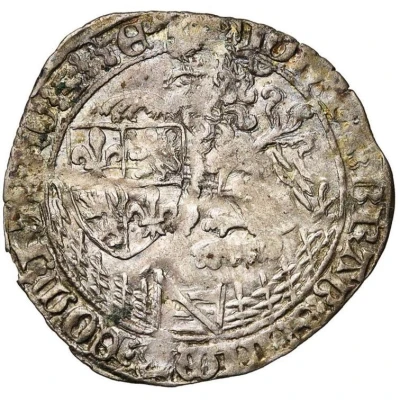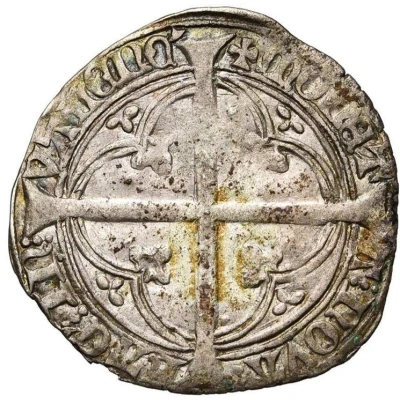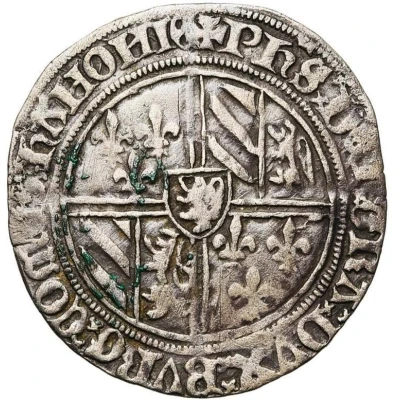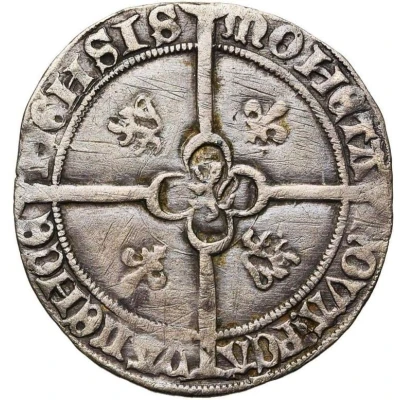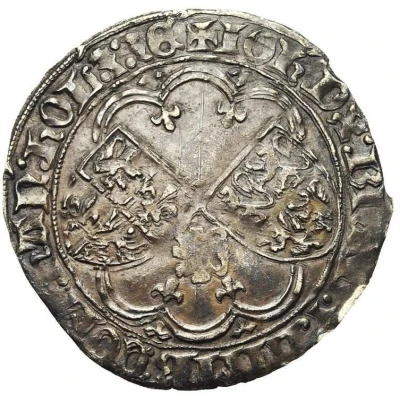
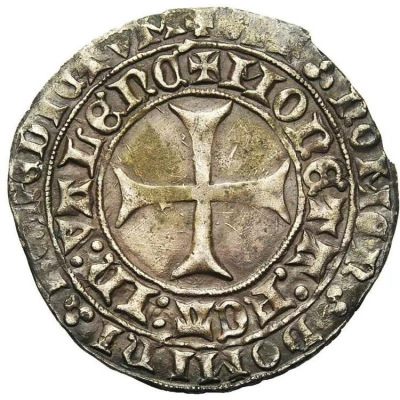

© Jean Elsen & ses Fils s.a.
2 Groats "Drielander"- Jacqueline and John IV of Brabant ND
| Billon (.480 silver) | 2.8 g | 30 mm |
| Issuer | County of Hainaut (French States) |
|---|---|
| Countess | Jacqueline of Bavaria (1417-1433) |
| Count | John of Brabant (1418-1425) |
| Type | Standard circulation coin |
| Years | 1420-1421 |
| Value | 2 Groats |
| Currency | Gros (1071-1506) |
| Composition | Billon (.480 silver) |
| Weight | 2.8 g |
| Diameter | 30 mm |
| Shape | Round (irregular) |
| Technique | Hammered |
| Demonetized | Yes |
| Updated | 2024-10-04 |
| Numista | N#313822 |
|---|---|
| Rarity index | 100% |
Reverse
Short cross pattee with double legend surrounding
Script: Latin
Lettering:
(Interior): +MOnETA: FAC: In: VALEnC
(Exterior): +SIT noMEn DOMInI BEnEDICTVM
Unabridged legend:
Moneta facta in Valencenensis
Sit nomen domini benedictum
Translation:
(Interior): Coinage made in Valenciennes
(Exterior): Blessed be the name of the Lord
Comment
Jacqueline of Bavaria ascended the throne as Countess of Hainaut, Holland and Zeeland when her father (William IV) died in 1417. A succession struggle was fomented in Holland by the municipal faction, who preferred to have John III, the Prince-Bishop of Liege. This conflict came to be known as the Hook and Cod wars.In 1418, Jacqueline married John IV, Duke of Brabant. In 1420 John promulgated a monetary union between Brabant, Hainaut and Holland, with identical types to be minted in Brussels, Valenciennes and Dordrecht. These types were nicknamed "Drielander" ("Three Lands") for this monetary union.
The Hainaut types are identified by the lion between the shields obverse (Brabant has fleurs-de-lis) and the interior legend reverse.
Interesting fact
One interesting fact about the 2 Groats "Drielander" coin is that it was issued during a time of political turmoil in the County of Hainaut, which was part of the French States. The coin was minted in 1420-1421, during the reign of Jacqueline and John IV of Brabant, who were struggling to maintain their power and control over the region. Despite the political instability, the coin remained a widely used and trusted form of currency throughout the region.
